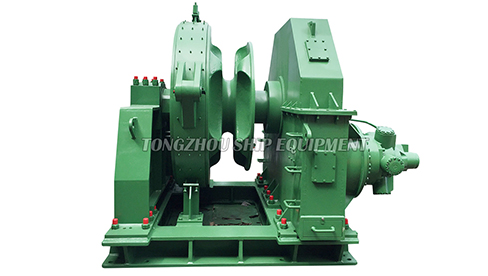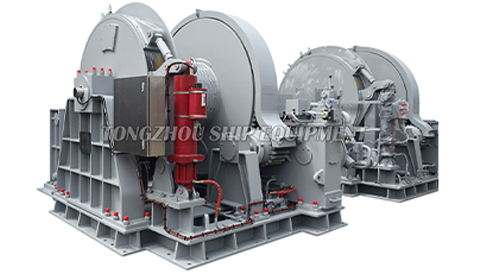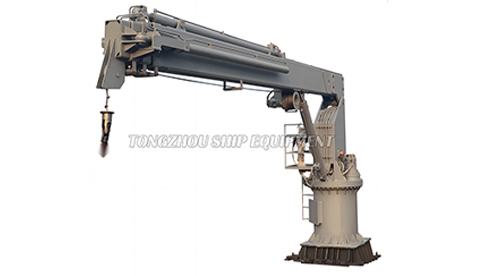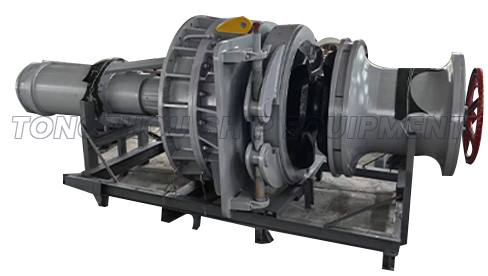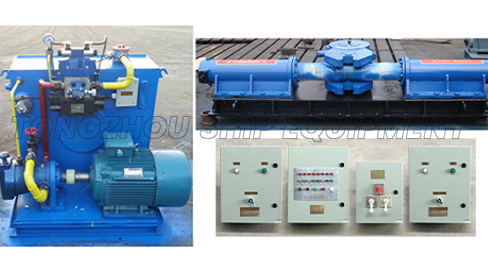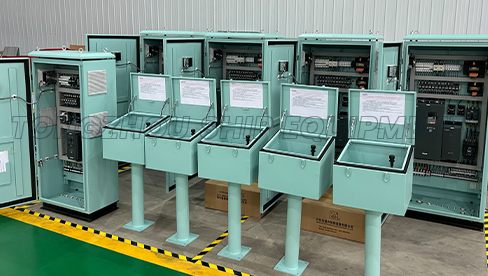What safety risks come with Hydraulic Windlass operation?
 2025.08.22
2025.08.22
 Industry News
Industry News
The hydraulic windlass is a critical piece of deck machinery aboard vessels of all sizes, providing the powerful torque necessary to handle heavy anchors and chains. While its reliability and power are indispensable, the operation of a hydraulic windlass carries inherent safety risks that require rigorous understanding and mitigation. Acknowledging and managing these risks is paramount to ensuring the safety of crew and the integrity of the vessel.
1. High-Pressure Fluid Injection Hazards
The most severe risk specific to a hydraulic windlass is the potential for high-pressure fluid injection. A pinhole leak in a hydraulic hose or fitting can release fluid at pressures often exceeding 200 bar (2,900 psi). This stream of hydraulic oil is powerful enough to penetrate skin and underlying tissue.
-
The Risk: This injury is a medical emergency. It may initially appear as a small, minor puncture but can lead to severe tissue damage, necrosis (tissue death), and potential amputation if not treated immediately and correctly. Hydraulic fluid is also toxic and introduces a risk of infection and systemic poisoning.
-
Mitigation: Never use hands or bare skin to check for leaks. Employ a piece of cardboard or wood to detect leaks. Always depressurize the system before performing any maintenance or inspection on hydraulic components. Wear appropriate personal protective equipment (PPE), including safety glasses and heavy-duty gloves.
2. Mechanical and Entanglement Hazards
The windlass involves massive moving parts, including the gypsy (wildcat), chain, and ropes. These present classic but ever-present mechanical dangers.
-
The Risk: Loose clothing, gloves, or lines can become caught in the machinery in a fraction of a second, leading to crush injuries, amputations, or pulling a crew member overboard. The sudden movement of the chain or rope under immense tension can also cause severe lashing injuries.
-
Mitigation: Always stand clear of the direct line of the chain and avoid standing in the "snap-back zone," which is the area where a parting chain or rope would likely recoil. Ensure all clothing is secure, and avoid wearing jewelry. Communication between the operator at the windlass controls and the crewmember overseeing the anchor must be clear and unambiguous.
3. Unexpected Movement and Load Handling
Anchors and chains represent an enormous amount of stored energy. The dynamic conditions of a vessel at sea add to the unpredictability of the load.
-
The Risk: A sudden shift in wind or current can place unexpected strain on the windlass and chain. A chain under tension can break, or the windlass brake can fail, causing the chain to run out uncontrollably ("free-fall"), creating a severe hazard for anyone on deck. The sudden release of a jammed or fouled anchor can also cause violent movement.
-
Mitigation: Regularly inspect and maintain the windlass brake lining. Never use the mechanical brake to stop a free-falling chain; it is designed only to hold a static load. Use the windlass motor to lower the anchor under power. Always be aware of weather and sea conditions when planning anchoring operations.
4. Electrical and Hydraulic System Safety
The power behind the hydraulic windlass comes from an electric motor driving a hydraulic pump. This combination introduces dual-system risks.
-
The Risk: Electrical risks include the potential for shock or electrocution, especially in the wet environment of a forecastle. Hydraulic risks include hose failures, fitting blow-outs, and the high-pressure injection hazard mentioned above. A sudden loss of hydraulic pressure can also lead to a loss of control over the anchor.
-
Mitigation: Ensure all electrical panels and connections are properly sealed and protected from water ingress. Conduct regular inspections of the entire hydraulic system, looking for signs of wear, corrosion, or damage to hoses and fittings. Follow a strict preventive maintenance schedule as outlined by the equipment manufacturer.
5. Environmental and Ergonomic Factors
Anchor operations often occur on a slippery, moving deck, frequently in poor weather or low light.
-
The Risk: Slipping, tripping, and falling are common risks that can lead to injury or a man-overboard situation. The heavy manual handling involved in working with shackles and other gear presents a risk of musculoskeletal injury.
-
Mitigation: Keep the forecastle deck clear of unnecessary gear and ensure good footing. Always wear a lifejacket or personal flotation device (PFD) and a safety harness when working on deck in heavy weather. Use proper lifting techniques for handling gear.
Safe hydraulic windlass operation is not merely about following a checklist; it requires fostering a culture of safety and situational awareness. Key elements include comprehensive crew training, clear standard operating procedures (SOPs), diligent pre-operation equipment checks, and the consistent use of appropriate PPE. By understanding the specific risks—from high-pressure hydraulics to heavy mechanical loads—mariners can employ the necessary precautions to ensure that this powerful tool is used safely and effectively.



 English
English  عربى
عربى  中文简体
中文简体 
